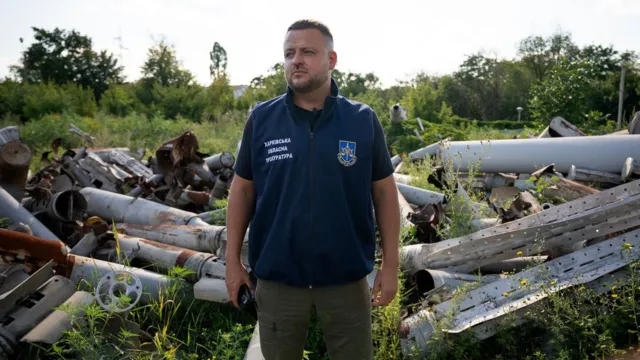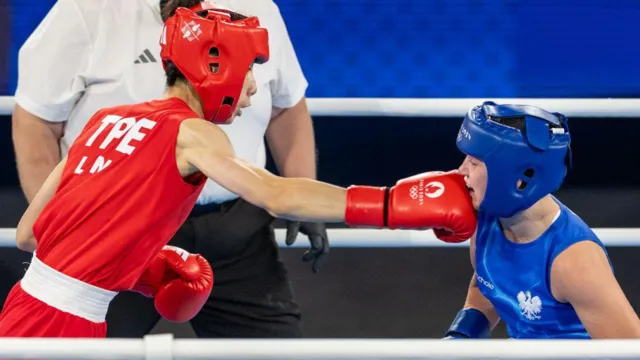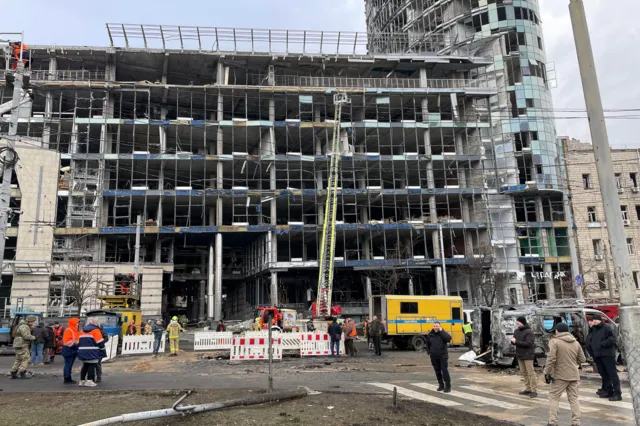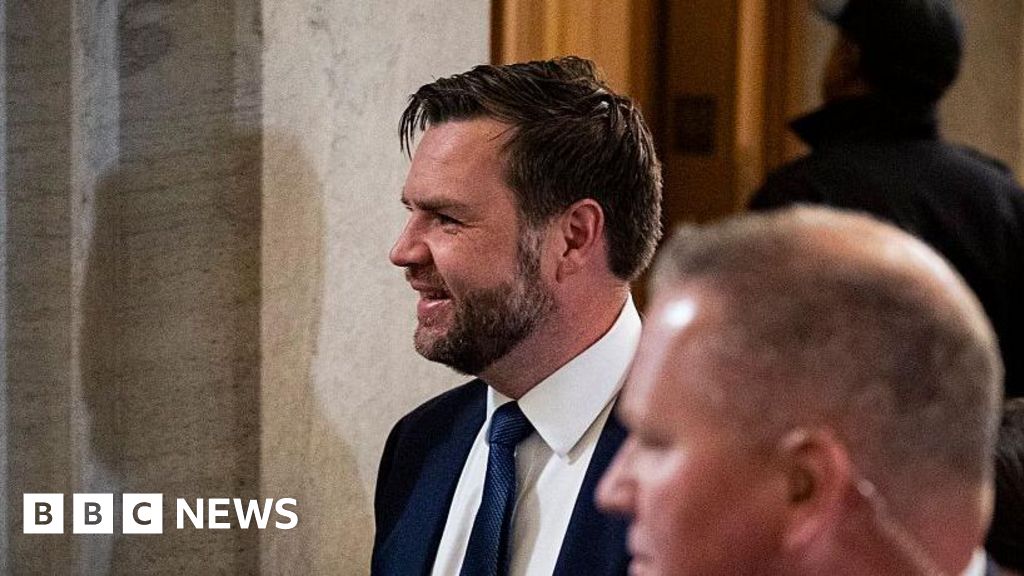Defence correspondent in Kharkiv
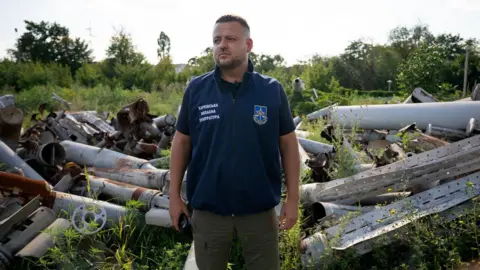 Lee Durant/BBC
Lee Durant/BBCSince Russia launched its full-scale invasion of Ukraine, Western nations have imposed far-reaching sanctions on the aggressor, in a bid to stymy its war effort.
But on the ground here in Ukraine, these sanctions seem to have limited impact.
Just outside Kharkiv, at a secret location, lies a collection of twisted metal remnants from attacks in and around the city. It’s a scrapyard of savagery – the remains of many of the Russian bombs, rockets, missiles and drones used to hit in and around Kharkiv over the past three and a half years.
“This is the material evidence with which we, as prosecutors, will prove the guilt of Russia in committing war crimes,” Dymtro Chubenko of the Kharkiv Region Prosecutor’s Office tells me. Every piece of rocket and drone here has been carefully collected and analysed.
Dmytro shows me one of the latest editions – a Russian version of Iran’s Shaheed drone. Russia has recently been firing hundreds of these Kamikaze drones at Ukraine’s towns and cities. They’re relatively cheap to make, he tells me – about $20,000 (£15,000) each.
He points to the nearby carcass of a Russian cruise missile. He says these cost millions.
But these weapons are not fully Russian-made – they contain “many components from western nations,” Dmytro says. “It’s possible [for Russia] to circumvent sanctions, but doing nothing is not an option either,” he adds.
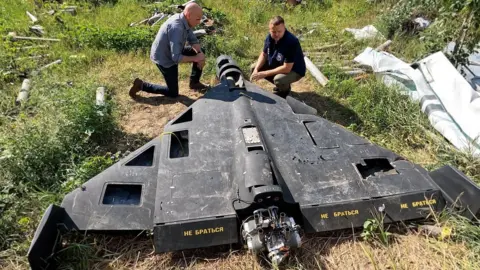 Lee Durant/BBC
Lee Durant/BBCDonald Trump appears to have lost patience with President Vladimir Putin. After early efforts at rapprochement between the US and Russia, the US president has now threatened to boost sanctions on the Kremlin unless Russia agrees to a ceasefire in Ukraine by this Friday.
Trump has said secondary sanctions will also come into force that day, affecting any country trading with Russia. He has already imposed an additional 25% tariff on India for buying Russian oil. US envoy Steve Witkoff met Putin in Moscow on Wednesday for talks ahead of the looming deadline.
So, if President Trump chooses to impose more sanctions on the Kremlin, would it be enough to force Russia to change course in this war? Dymtro believes hitting Russian oil and gas exports could have a significant economic impact.
“We will not be able to stop it with a snap of our fingers, but we need to do it, we need to act,” he says. There is hope that President Trump might act.
Kharkiv, just 30 kilometres from the Russian border, has borne the brunt of many strikes throughout the war. Thousands of buildings have been damaged or destroyed. Throughout the region almost 3,000 civilians have been killed, 97 of them children.
Police Colonel Serhii Bolvinov shows me the burnt-out shell of the police headquarters he used to work in. A Russian strike in 2022 killed three of his officers as well as six civilians. He points to the gaping hole in the wall where the missiles entered. Russian tactics, he says, haven’t changed. “Russia tries to hit and kill as many civilians as they can.”
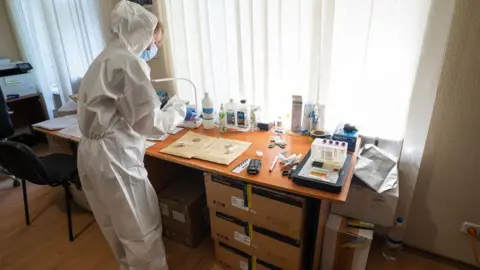 Lee Durant/BBC
Lee Durant/BBCColonel Bolvinov’s job is to investigate every single civilian death. He’s leaving no stone unturned. He has 1,000 men and women working for him, now dispersed in basement offices right across the city. They’re carrying out painstaking forensic work to build a criminal case against those responsible.
Photographs of Russian military officers who’ve been tied to specific attacks are plastered across the wall – the wanted.
In another building, crime scene investigators carry out DNA tests to identify the latest casualties – Ukrainian civilians killed in a Russian rocket attack as they queued up to collect water. Colonel Bolvinov shows me footage from strike – unrecognisable charred bodies lie on the ground.
“It’s hard to do this work, but it’s very important work for future justice for us, for the Ukrainian people,” he says. He shows me a three-dimensional computer image of a mass grave in Izium where more than 400 bodies were discovered. “Some of the cases leave a scar on all of us, and we will never forget this trauma,” he says.
Colonel Bolvinov says he wants to see an end to this war. He hopes President Trump’s increasing pressure on President Putin will work. But the police chief doesn’t want peace at any price. “Peace without justice, is not really peace,” he says. Even if a ceasefire can be agreed, it still won’t address the wounds of most Ukrainian people.
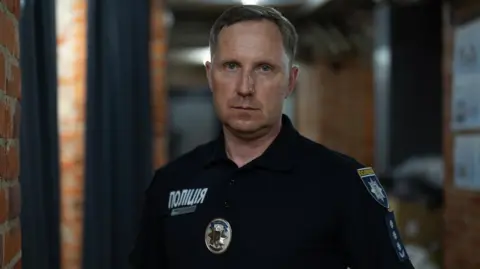 Lee Durant/BBC
Lee Durant/BBCAt a cemetery outside Kharkiv is another reminder of the cost of the war: the ever-growing ranks of dead Ukrainian soldiers. Each grave is marked by the blue and gold of the national flag. The silence here is only broken by the sound of them flapping in the wind.
Nearby, in the civilian section of the cemetery, a mother and her family are placing flowers on their daughter’s grave. Sofia was just 14 years old when a Russian glide bomb took her life last year. She was sitting on a park bench in Kharkiv, enjoying the warm summer afternoon with a friend.
I ask her mother Yulia if President Trump’s increasing pressure on Russia can bring any comfort, but she’s not optimistic.
“These conversations have already been going on too long,” she tells me.
“But so far there are no results… Hope is fading.”
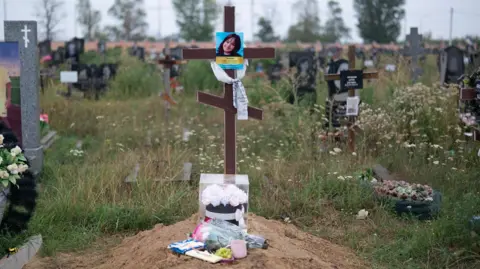 Lee Durant/BBC
Lee Durant/BBC